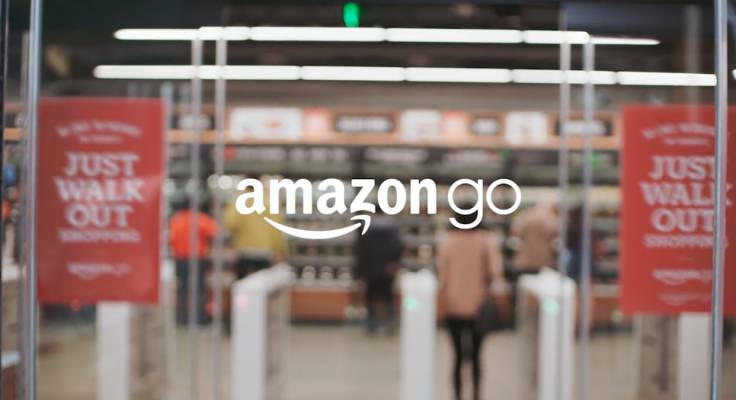Are American Shoppers Ready For Walmart's 'Scan & Go' And Amazon Go?

Walmart took another shot at Amazon when it revealed its "Scan & Go” technology, which allows shoppers to pay for products in stores by scanning them on their smartphones. The service, which is currently being tested in some locations, directly competes with Amazon Go, a store without checkout lines.
Walmart had rolled out its Scan & Go technology a few years ago, but it failed to catch on. However, new data from the 2017 Walker Sands Future of Retail Report suggests it could be more popular with consumers this time around. The annual report, based on responses from more than 1,600 U.S. consumers, found 60 percent of Americans are open to shopping in checkout-less stores.
Read: Free Wi-Fi Spots: People Can't Help Logging On, Even If It's Dangerous
Shoppers looking forward to this technology comes as 78 percent of consumers own a smartphone, and as two-thirds of them say they are comfortable making purchases through apps on their mobile devices. Although consumers can buy items through mobile apps, 79 percent of them still said they prefer purchasing their groceries at a store.
Walmart and Amazon’s in-store and mobile app merge could be a way to attract consumers.
“Walmart’s new ‘Scan & Go’ technology and Amazon’s ‘Amazon Go’ concept are two examples of ways that these companies are starting to think more about the connected consumer and shifting their experiences as a result,” Erin Jordan, account director at Walker Sands and one of the report's authors, told International Business Times.
It’s a good idea for retailers to boost technology in store to enhance the full shopping experience, Jordan said, since 18 percent of consumers go to physical stores in order to get a personalized shopping experience.
However, throwing all types of new shopping technology at consumers won’t necessarily excite them, according to Jordan. The report found only 15 percent of consumers said they were interested in smart dressing rooms, while 13 percent said VR experiences will cause them to shop at a store.
“Retailers and brands that actually know their customers’ preferences will succeed, but they must first identify which next-gen features their customers actually desire,” said Jordan.
Read: Facebook, Apple Pushing AR, But Many Americans Don't Know What It Is
Companies will also have to work with what consumers are comfortable with.
“When it comes down to it, consumers want the most convenient shopping experiences,” said Jordan. “Companies who fail to meet them where it’s most comfortable, whether that be in their homes, on their smartphones or in the store, will ultimately lose market share.”
She said Amazon Go is a good example of bringing a brick-and-mortar store to life through data collected to create a better shopping experience for consumers, and it has already garnered shoppers’ interest. However, only time will tell if Amazon Go will actually drive more sales.
Voice Technology
Another technology that is being pushed by Amazon is ordering through voice assistants, like Alexa on Echo devices. The report found one in five consumers said they had made a purchase through an Echo device or another voice-controlled gadget in the past year. Meanwhile, one in three consumers say they plan to make a purchase using a voice-controlled device in the next year. The technology is even more frequent with millennials, as 37 percent of them say they “always” or “often” shop online via voice-controlled devices.
The use of voice technology while shopping could further increase as Apple releases the HomePod later this year, especially since Amazon already paved the way.
“The rise of Amazon shopping has made consumers more trusting and the Echo has been a great introduction to a new avenue of even more convenient shopping with a marketplace that many consumers already trust,” said Jordan.
As for Amazon, Jordan said the company is well-positioned to “see big returns as voice-controlled commerce takes off.” Amazon has already tried to push the use of voice technology, especially with Alexa deals during its Prime Day sale.
However, consumers still have some concerns about voice technology, the report found. Shoppers identified the three main barriers to voice purchases: security, privacy and lack of visuals. Although consumers are weary, Jordan said the use of the technology to shop will likely increase.
“[As] voice commerce becomes more widely accepted and more consumers purchase home assistants, it’s likely that these barriers will start to dissipate, similar to the way some of these concerns about online shopping have lessened,” said Jordan.
© Copyright IBTimes 2025. All rights reserved.





















